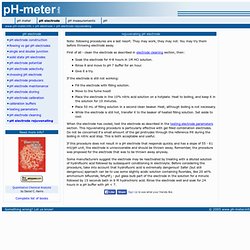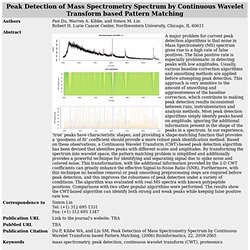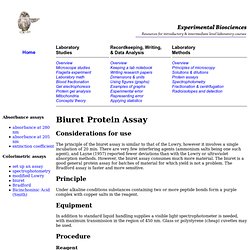

Rejuvenating pH electrode. Note: following procedures are a last resort.

They may work, they may not. You may try them before throwing electrode away. First of all - clean the electrode as described in electrode cleaning section, then: Soak the electrode for 4-8 hours in 1M HCl solution.Rinse it and move to pH 7 buffer for an hour.Give it a try. If the electrode is still not working: Fill the electrode with filling solution.Move to the fume hood! When the electrode has cooled, test the electrode as described in the testing electrode parameters section. If this procedure does not result in a pH electrode that responds quickly and has a slope of 55 - 61 mV/pH unit, the electrode is unrecoverable and should be thrown away. Some manufacturers suggest the electrode may be reactivated by treating with a diluted solution of hydrofluoric acid followed by subsequent conditioning in electrolyte.
Peak Detection of Mass Spectrometry. A major problem for current peak detection algorithms is that noise in Mass Spectrometry (MS) spectrum gives rise to a high rate of false positives.

The false positive rate is especially problematic in detecting peaks with low amplitudes. Usually, various baseline correction algorithms and smoothing methods are applied before attempting peak detection. This approach is very sensitive to the amount of smoothing and aggressiveness of the baseline correction, which contribute to making peak detection results inconsistent between runs, instrumentation and analysis methods. Most peak detection algorithms simply identify peaks based on amplitude, ignoring the additional information present in the shape of the peaks in a spectrum.
In our experience, ‘true’ peaks have characteristic shapes, and providing a shape-matching function that provides a ‘goodness of fit’ coefficient should provide a more robust peak identification method. Protein determination by the biuret method. Considerations for use The principle of the biuret assay is similar to that of the Lowry, however it involves a single incubation of 20 min.

There are very few interfering agents (ammonium salts being one such agent), and Layne (1957) reported fewer deviations than with the Lowry or ultraviolet absorption methods. However, the biuret assay consumes much more material. The biuret is a good general protein assay for batches of material for which yield is not a problem. The Bradford assay is faster and more sensitive. Principle Under alkaline conditions substances containing two or more peptide bonds form a purple complex with copper salts in the reagent. Equipment In addition to standard liquid handling supplies a visible light spectrophotometer is needed, with maximum transmission in the region of 450 nm.
Procedure Reagent Assay Volumes sample, reagent can be scaled up/down and/or volume ratios varied, as with any assay. Analysis Comments References Gornall, AG, CS Bardawill, and MM David. Protein determination with the modified Lowry method. Considerations for use The Lowry assay (1951) is an often-cited general use protein assay. For some time it was the method of choice for accurate protein determination for cell fractions, chromatography fractions, enzyme preparations, and so on. The bicinchoninic acid (BCA) assay is based on the same princple and can be done in one step, therefore it has been suggested (Stoscheck, 1990) that the 2-step Lowry method is outdated.
However, the modified Lowry is done entirely at room temperature. The Hartree version of the Lowry assay, a more recent modification that uses fewer reagents, improves the sensitivity with some proteins, is less likely to be incompatible with some salt solutions, provides a more linear response, and is less likely to become saturated. Principle Under alkaline conditions the divalent copper ion forms a complex with peptide bonds in which it is reduced to a monovalent ion.
Equipment Procedure - Hartree-Lowry assay Reagents Assay Analysis Reagents Assay Comments References.